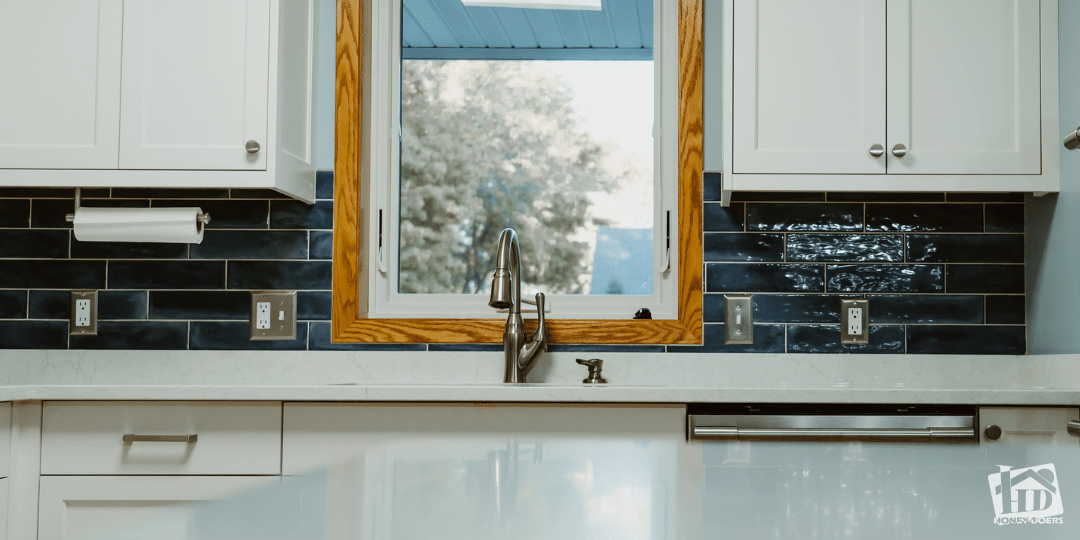Window installations are nothing to take lightly. As an experienced remodel and renovation company, we recommend avoiding a DIY attempt at installing windows in your home. There are too many factors at play and it would be better in the long run for you to connect with a local contractor.
However, we also understand that sometimes things are just easier to do yourself. So, we’ve put together this post to help you understand the complexities behind home window installation both from the home contractor perspective and the DIY perspective. Read on to learn more.
Working with a Contractor for Your Window Installation
The first step of the planning process is consulting potential service providers in your area. It helps to seek out referrals from people in your area who have required a window installed in their homes. Honey-Doers offers a free no obligation consultation and quotation for your choice of window.
What Window Type Is Best for My Home?
When you make your window order, you may need to know the following: window type, internal and external measurements of the space and the color. Then, once you have the parameters of your project in place (limitations of the window space included), you’ll need to decide what type of window to install.
Some of the options for windows types Honey-Doers installs include:
- Single or double hung windows: the bottom part of the window opens by sliding upwards. In a double hung window, both the bottom and the top part open by sliding in the opposite direction.
- Single slider window: has two glass panes with one fixed and another movable that opens horizontality. We can also install double and three pane slider windows.
- Casement (hinged) windows: which are hinged on one side and open to the outside. They do not have a bar in the middle, offering unobstructed flow of air, natural light and view of the outside.
- Bay windows: extend outwards from the walls of a building, expanding a room and draws in a lot of natural light.
- Picture window: entail a fixed window pane that doesn’t open made without a glazing bar. It allows for natural light and acts as a frame for the outside scenery.
- Egress window: built mostly for basements, an egress window opens wide and is meant to double as an emergency exit.
How much room do window installers need?
Your installers will need a working space of at least three feet. The space allows for placement of tools required, movement for one or two people and a temporary holding area for the window as the rough opening is being prepared.
Planning for a DIY Window Installation Project
On the other hand, you may want to DIY your window installation process. The first step with a DIY project is getting the right tools. Some of the tools you will need for your a window installation include:
- Tape measure
- Nails or screws
- Screw driver
- Mini pry bar
- Hammer
- Waterproof shims
- Safety glasses
- Utility knife
What are the steps to install a window?
The following is a breakdown of the steps required in a sliding window installation process. Again, we recommend you use a professional service for your home window installation, and note that the following steps do not accurately represent every situation.
Step 1: Cut the Rough Opening
Mark up the area you want your window to place the new window. If this is a window replacement project, then you will not need this step.
Once you have the area marked up, measure the height, length and width of the window and the rough opening where the new window will be fitted into. You will want to ensure that the space is ½ an inch wider and taller than the actual window size. The allowances will make your installation square and sufficient.
Step 2: Flashing
The second step is perhaps the most involved. You’ll want to make sure that the window is watertight. For this example, a pull and stick waterproof flashing membrane should be sufficient. At this point the window opening is visible, so you can see the house wrap or the weather resistive barrier. Angle cut the weather resistive barrier four inches outwards at the corner of the window opening. Temporarily hold back the flaps created by the angle cut with a tape.
Starting with the bottom side of the window frame, stick about 5 inches of the flash membrane on each side of the window. The membrane should secure the house wrap to the sheathing.
Next, cut another piece of the flashing, that folds over half way through the seal of the window over to the first flash membrane. After the bottom frame, move to the side frames and finish off with the top.
Special care is given to the corners. Cut a small piece of the flashing membrane and mount it over the side of the frame and seal, cutting a slide on both sides to secure it down.
The depth of the selected window needs to align to the cladding type that will hold it. For the window to be watertight, you also need to consider the flashing type required for your construction. The flashing can be put on the face of the stud using a staple gun.
Place quarter inch shims under the window to create an air gap and then use the sealant to hold them in place. You should place the window directly on the window sill. The dry fitting should reveal any issues regarding the size of the rough opening. The flashing is pressure sensitive therefore use a roller to press it down in place.
Step 3: Sealant
Using a premium polymer sealant that doesn’t crack or shrink when it cures and retains elasticity creating water seal along the flung to the windows. At the bottom, leave a few small gaps which will serve as weep holes in case water finds its way in.
Step 4: Window Placement
Now place the window into the rough opening, starting with tacking in the top right side. Adjust the window, making sure it rests on each of the shims.
Ensure that the window is square and plump by measuring diagonally, both ways. Adjust the window as necessary until both measurements are the same.
Use roofing nails to secure the window along the nail flange. Next on both sides, stick the flashing over the nail flange, over the sheathing and on top of the house wrap, tacking it under the top house wrap flap and over the bottom wrap. At the top, apply the flashing over the nail flange, underneath the wrap and directly on the sheathing.
You may consider taping the edges of the top flap down and so that it holds securely in place. Use a roller to press down the flapping.
Get a Free Estimate From an Experienced Minneapolis Home Remodel Company
For over 24 years, Honey-Doers has provided Twin Cities customers with quality home remodeling, renovation, repair, and installation services. Over the years, we’ve not only gained experience working with a variety of different homes, but we’ve built up a wealth of resources – including contractor and manufacturer networks.
Want to get in touch? Give us a call or connect with us online for a free estimate.




